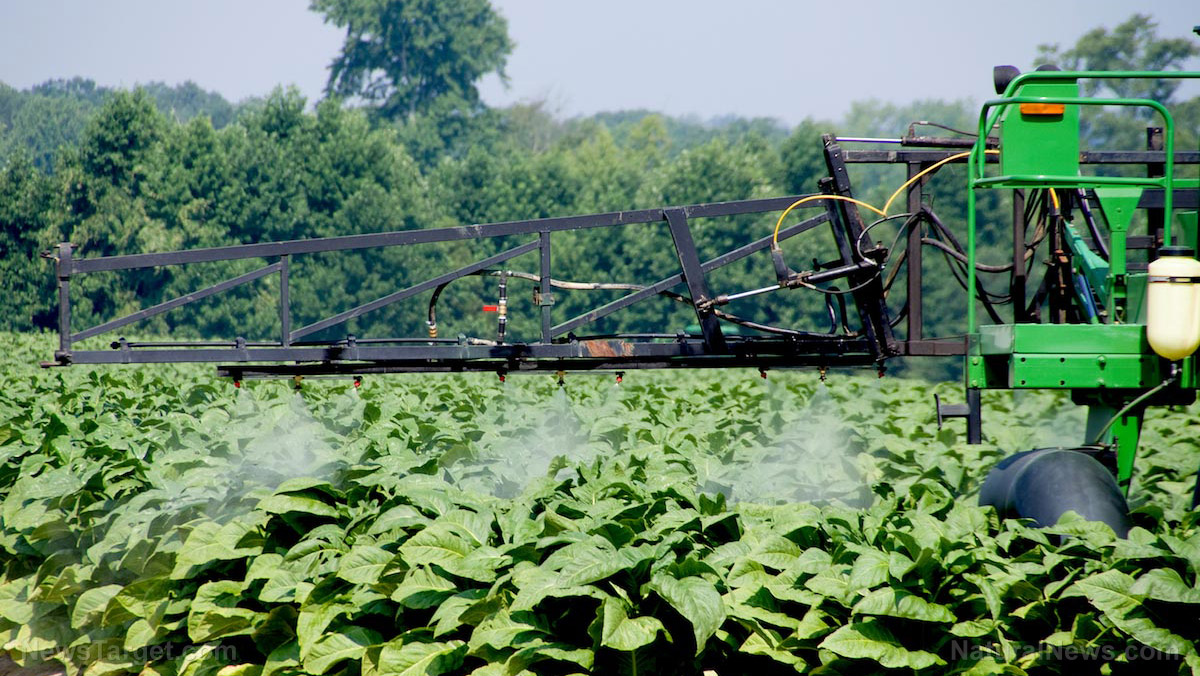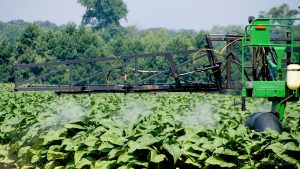Terbuthylazine — toxicity, side effects, diseases and environmental impacts
11/16/2017 / By Michelle Simmons

Terbuthylazine is an herbicide that belongs to the chloro-triazine family. It has the ability to be a powerful inhibitor of photosynthesis in plants. It binds to the plastoquinone-binding protein in photosystem II, which inhibits the transportation of electron. It can be absorbed by plants through the roots, as wells as by the foliage, then it is distributed throughout the plant. This herbicide is used in pre- and early post-emergence control of annual broad-leaved weeds in a selective variety of plants such as maize, sorghum, potatoes, peas, sugar cane, vines, fruit trees, citrus, coffee, oil palm, cocoa, olives, and rubber. In addition, it is used for forestry in tree nurseries and new planting. This herbicide is specifically effective against annual dicotyledons. Terbuthylazine can be in the form of granules with brown color and faint odor. Terbuthylazine has the molecular formula of C9H16ClN5.
List of known side effects
There are a few known side effects of terbuthylazine in humans. Likely routes of exposure to the chemical is through skin contact, ingestion, and inhalation. When inhaled, terbuthylazine may cause sore throat, headache, nausea, abdominal distress, or increased respiration. When it comes in contact with the skin, it may cause irritation in the skin, redness, or discomfort. Moreover, when it comes in contact with the eyes, it may cause irritation in the affected eye, redness, pain, and blurred vision. Moreover, when ingested, it may cause nausea, vomiting, abdominal distress, diarrhea, and muscle spasms. In addition to these, terbuthylazine has been suspected to cause non-Hodgkin’s lymphoma and lung cancer.
Terbuthylazine can be harmful to the environment and it can affect the aquatic life the most, as it can be toxic to the aquatic environment with long lasting effects.
Body systems affected by terbuthylazine
Terbuthylazine can adversely affect several body systems, such as the respiratory, ocular, integumentary, digestive, and muscular systems.
Items that can contain terbuthylazine
Terbuthylazine can be found in herbicide products that are used to control grass and broad-leaved weeds in a variety of locations, such as forestry. In addition, the chemical can be found in herbicide products that are used to control slime-forming algae, fungi, and bacteria in non-agricultural situations. Some of the pests controlled by products that contain terbuthylazine include pigwed, goosefoot, bladder weed, dwarf marigold, blackjack, starbur, and evening primrose. These herbicide products are applied to crops such as maize, sorghum, apples, citrus, and bush vines. Terbuthylazine can also be applied to non-crop sites such as roads, railways, and industrial sites. Terbuthylazine products are sold in the brand names Calaris, Skirmish, and Gardo Gold.
How to avoid terbuthylazine
There are several methods to avoid or reduce exposure to terbuthylazine when handling the chemical. One of these ways is to wear an approved respiratory protection. Wearing this protective equipment can help avoid breathing in the chemical. Another way is to use a protective clothing in order to prevent repeated or prolonged skin contact with this chemical. Moreover, wearing protective gloves, which is chemical-resistant, can help prevent contact with the chemical. Lastly, wearing safety goggles when handling the product can prevent the substance from getting in contact with the eyes.
Where to learn more
Summary
Terbuthylazine is an herbicide that belongs to the chloro-triazine family. It acts as a powerful inhibitor of photosynthesis in plants. This herbicide is used in pre- and early post-emergence control of annual broad-leaved weeds in a selective variety of plants such as maize, sorghum, potatoes, peas, sugar cane, vines, fruit trees, citrus, coffee, oil palm, cocoa, olives, and rubber. In addition, it is used for forestry in tree nurseries and new planting.
Terbuthylazine can be harmful when inhaled, ingested, or comes in contact with the skin.
Terbuthylazine may cause sore throat, headache, nausea, abdominal distress, or increased respiration.
Terbuthylazine may cause irritations in the skin, eyes, and respiratory tract.
Terbuthylazine adversely affects the respiratory, ocular, integumentary, digestive, and muscular systems.
Terbuthylazine can be toxic to the aquatic environment with long lasting effects.
Sources include:
Tagged Under:




















